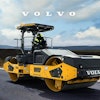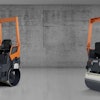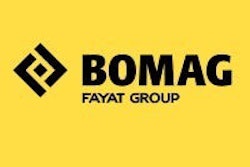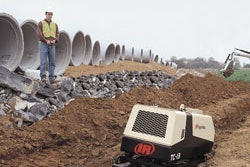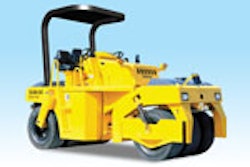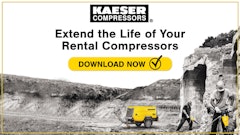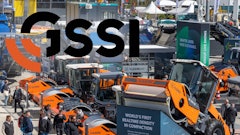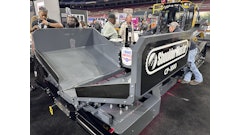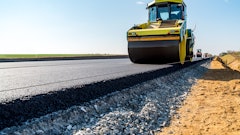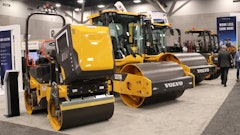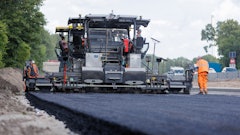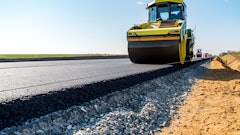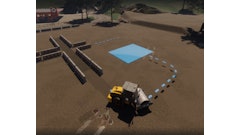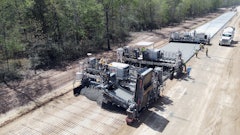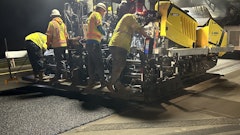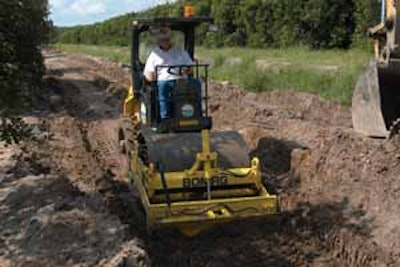
On the surface, soil compaction is pretty straightforward - a vibrating drum agitates soil particles until less air exists between them, creating a more stable structure. The machines that perform this task seem rather simple as well, however, today's manufacturers are working hard to bring you models which are more productive, simpler to maintain and easier for your customers to operate.
Single-drum soil compactors are one of the most common types of compaction equipment found in rental inventories. To be specific, the 84-in. drum machine is most popular due to its ability to cover a large area with a single pass.
According to Steve Wilson, manager marketing services/product manager at Bomag Americas Inc., this class of machine is quite common, but there are features available today which you should consider before choosing one for your fleet. Items like operating weight, rolling width, drum amplitude and dynamic force are things to compare and contrast, but so are some of the latest technologies that set some machines apart from others.
Doing it smarter
Many compaction equipment manufacturers have introduced automatic vibration control systems to help facilitate the most productive and efficient compaction performance. These systems work by utilizing a directed exciter mechanism so the roller automatically adjusts the output energy of the drum to optimize compaction. This allows the operator to know when maximum density has been achieved, eliminating unnecessary passes and overcompaction of the soil.
While this technology increases the acquisition cost of the machine, manufacturers argue that it pays for itself by increasing productivity.
"It is more expensive," says Wilson at Bomag, which offers its Variocontrol Intelligent Compaction™ system. "It's not typically seen in a rental environment right now, but as the technology grows, we'll begin to see it more and more."
Wilson notes that automatic vibration control technology offers several advantages. "It minimizes the time needed to achieve maximum results, there is no overcompaction and it allows for proof rolling to find weak spots."
Improved traction
Machine control systems for enhanced traction and gradeability are another area of advancement.
According to Wilson, systems such as these monitor the slip potential between the drum and rear rubber tires and then automatically adjust the hydraulic flow to deliver optimum performance for operation on severe grades or difficult traction conditions and to prevent the roller from stalling or "digging" itself into the material.
Lower cost of ownership
Everyone wants their equipment to be more economical, particularly the larger pieces of equipment that cost a lot to fuel.
Wilson points out that Bomag features Eco-Mode on its Dash 4 Series. On these machines, there are three throttle positions: one for idle, one for maximum rpm and another for Eco-Mode.
"The engine senses load demand and adjusts the engine rpm to meet the needs of that demand," explains Wilson. "As a result, the engine consumes less fuel and there are fewer emissions and noise."
Like automatic vibration control systems, Eco-Mode adds to the cost of the machine, but the savings on fuel helps offset the increase.
"It lowers the cost of ownership while the machine still performs at top productivity," Wilson says.
Other manufacturers offer similar systems. The concept comes from Europe, where the cost of fuel is much higher than it is in the U.S.
Shell kits, blades and more
One feature that's particularly suited to the rental industry is shell kits for converting smooth drums into padfoot and vice versa. This allows you to serve two customer bases with one machine. Particularly desirable in areas with mixed soils, shell kits improve the utilization of a single machine, thereby improving your return on investment.
Shell kits usually take about an hour to install and allow you to offer your customers the best of both worlds without the hefty investment in two separate machines.
Wilson notes that another feature which is becoming more popular is the two-way strike-off blade, along with options like an angle blade which can slew like a snowplow and a tilting blade which rotates left to right and works on angled slopes.
"These are useful in rental because they help the soil compactor act in place of a skid steer or grader," says Wilson at Bomag. "They really increase versatility."
Many manufacturers today are offering more comfort to their customers as well. Soil compactors are available with cabins to shield operators from the elements, and some even offer heat and air conditioning as well as glass with UV filters. What's more is that manufacturers are striving to improve creature comforts such as the operator's seat, making the suspension more forgiving, and arranging the position of controls to make them easier and more comfortable to reach.
"Larger operator platforms, ergonomically placed controls and indicators, as well as multi-point adjustable seat designs all work together to make the machine more user friendly," says Jeff Fox, product/marketing manager at Ammann America.
"These features reduce fatigue and improve safety," Wilson adds. "The initial cost is more, but it's still not that much when you consider how much more productive the operator can be."
Dale Starry, manager of industry and governmental relations for Ingersoll-Rand, agrees that ergonomic features are becoming the standard in ride-on compaction equipment.
"There is more attention being paid to complying with ISO and SAE ergonomic standards," he says. "Machines offer better isolation of the operator platform, better placement of operator seating and controls, reduced noise, better all-around visibility of work zone with one meter by one meter visibility to the front and the rear, and available enclosed cabins with HVAC systems."
Ease of service
According to Starry, productivity and uptime of soil compactors are being improved by extended engine service intervals, maintenance-free batteries and more. The incorporation of sight gauges on fluid reservoirs, grouped hydraulic test ports and extended-life fluids like engine coolant go a long way toward making service and maintenance easier and less time consuming for rental houses and operators alike.
Starry says other features assisting in this movement include tilting decks or removable panels for easier and faster access to major hydraulic components, more use of bolt-on rather than welded assemblies and components, and color-coded maintenance decals with instructions in multiple languages or in international symbols.
Is it worth it?
When equipment advances technologically, it's often difficult to justify the increase in cost that inevitably goes along with it, particularly in a rental setting. But as the manufacturers in this article point out, many of the advancements being seen on today's soil compactors increase productivity to the point that they arguably pay for themselves quickly. Even the creature comforts that are so often eschewed by rental houses that believe customers renting equipment don't expect or need such features can be cost effective because they increase the potential for resale down the road.
And since many customers rent equipment to try things they're not yet ready to buy, it might pay for you to offer your customers something more than just the basics. Plus, being perceived as technologically advanced in the market can only serve to boost your image in a positive direction.


